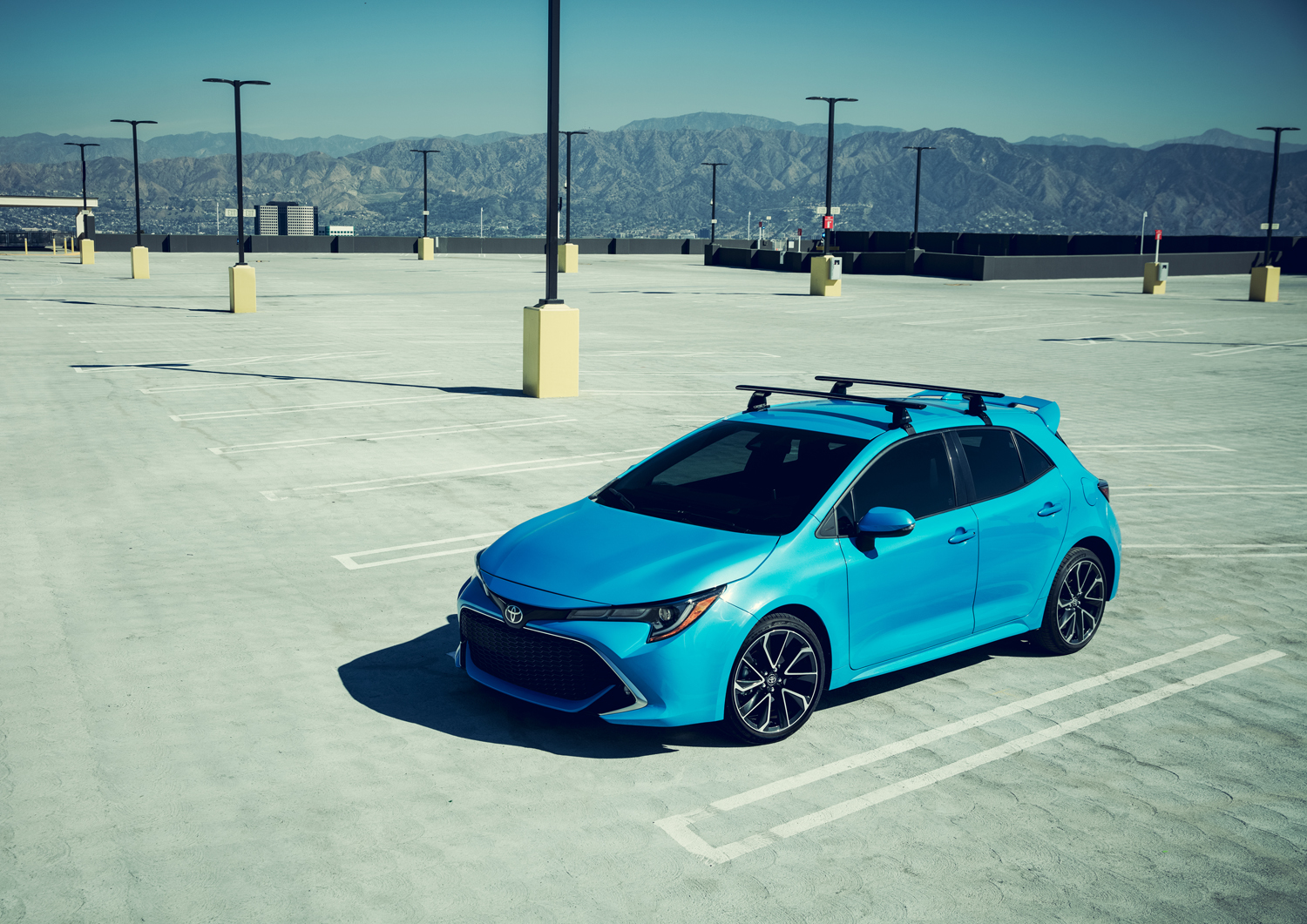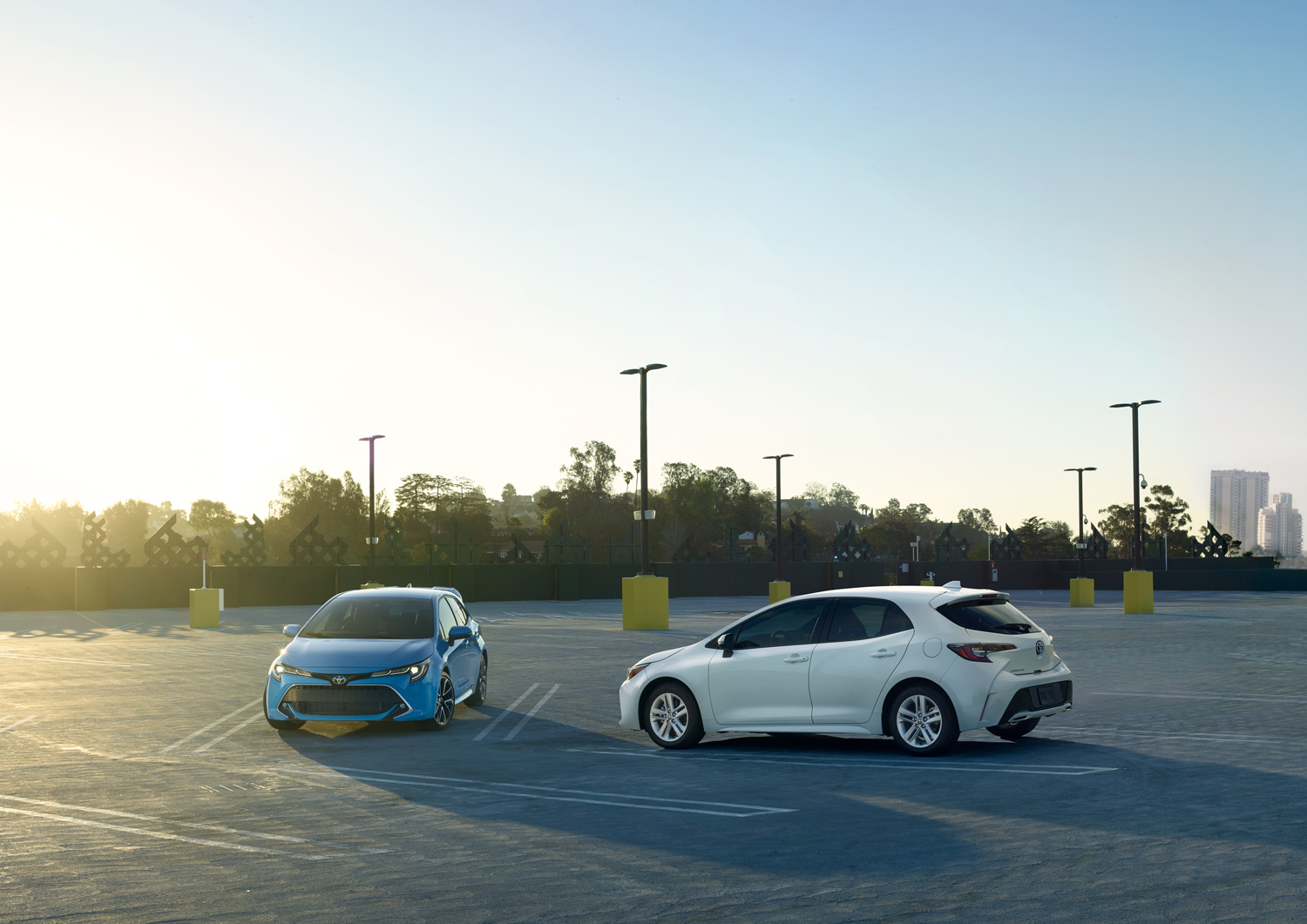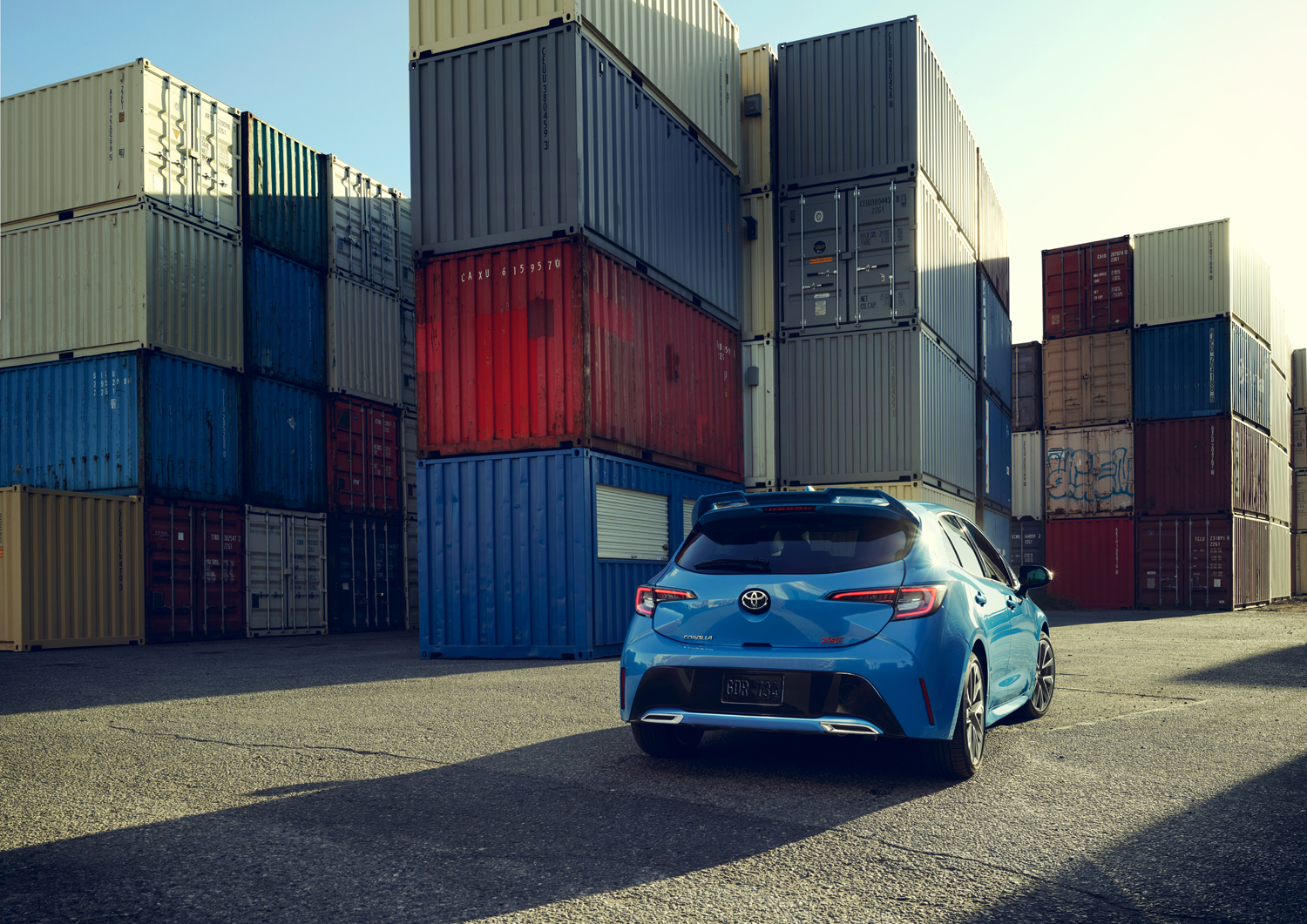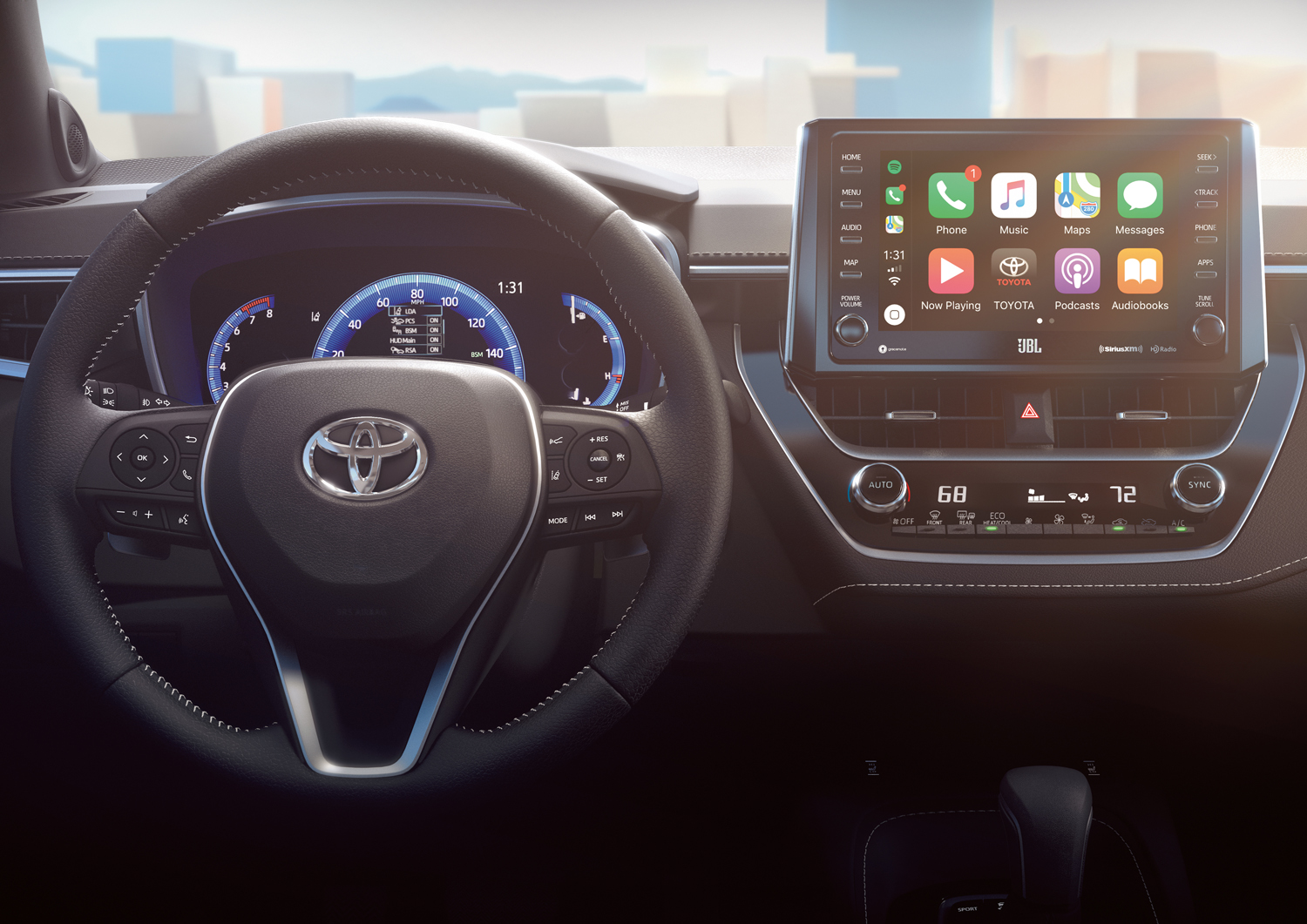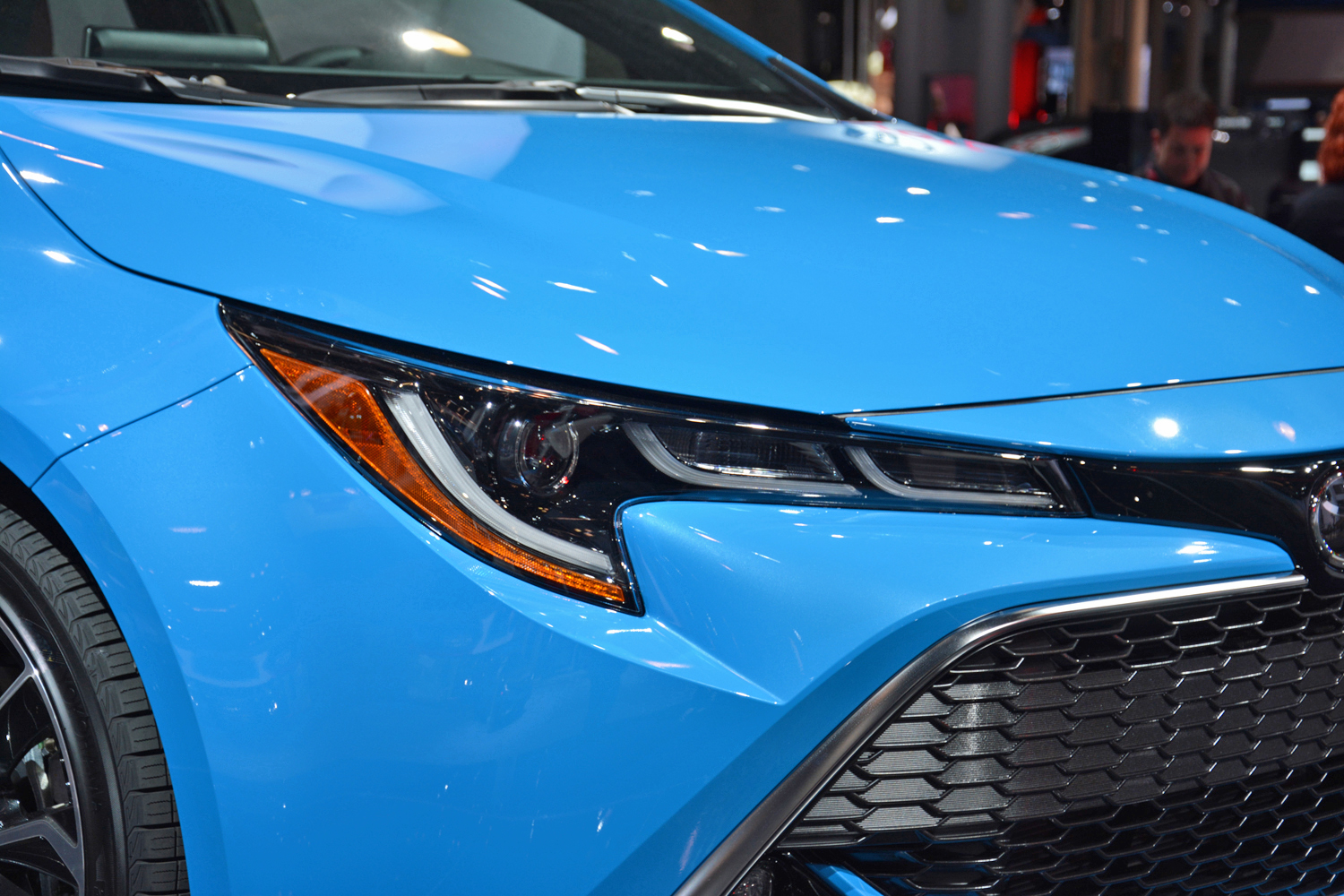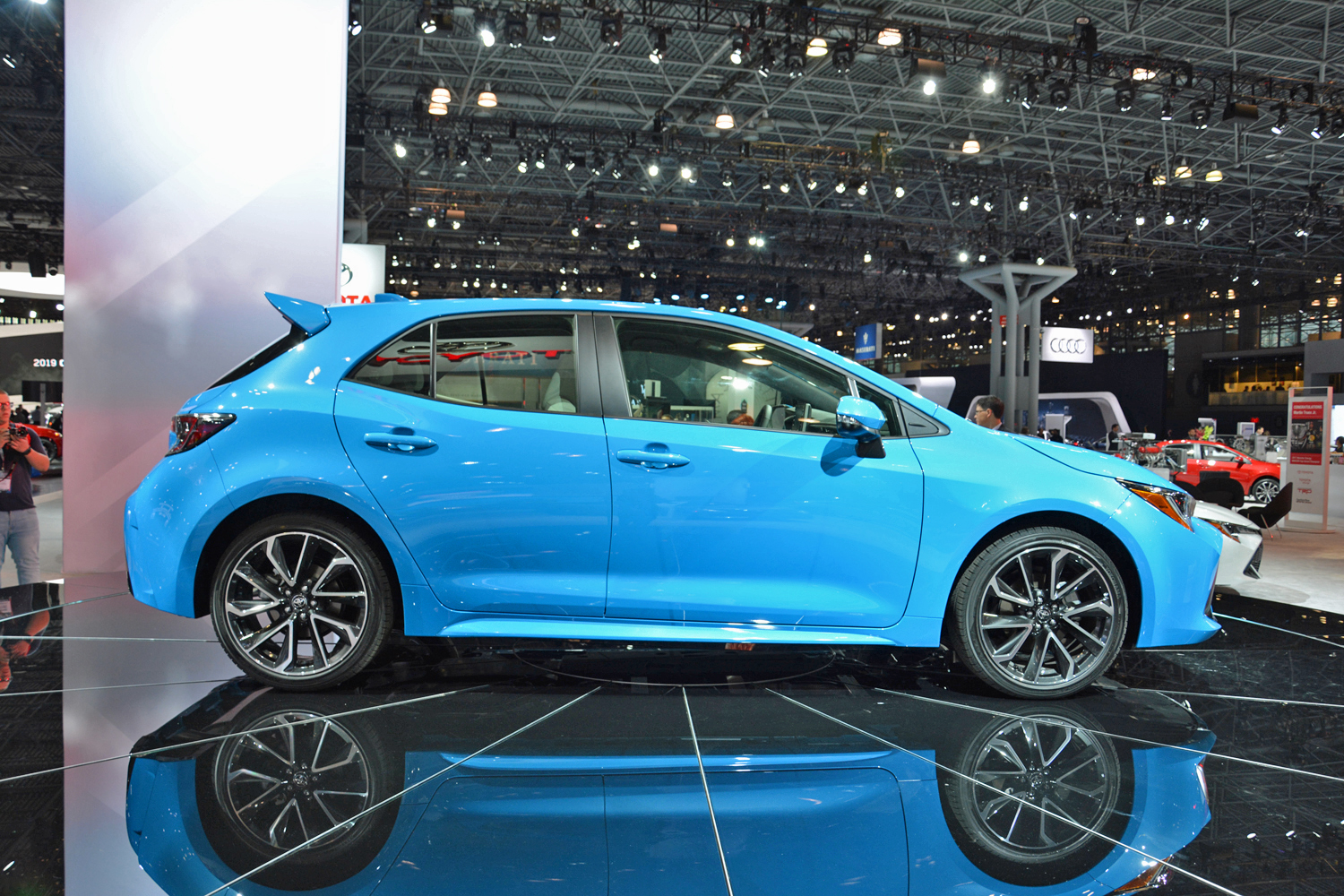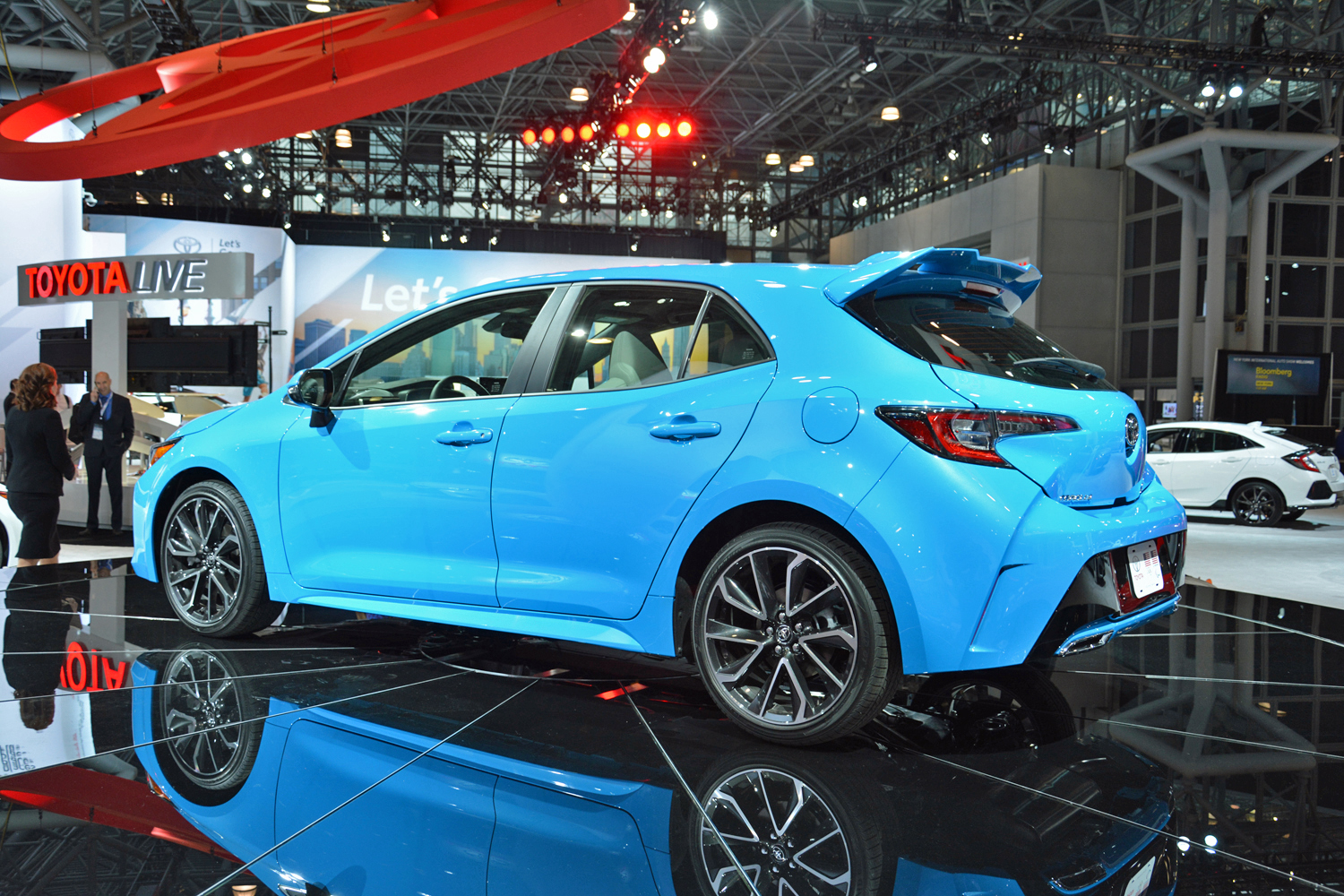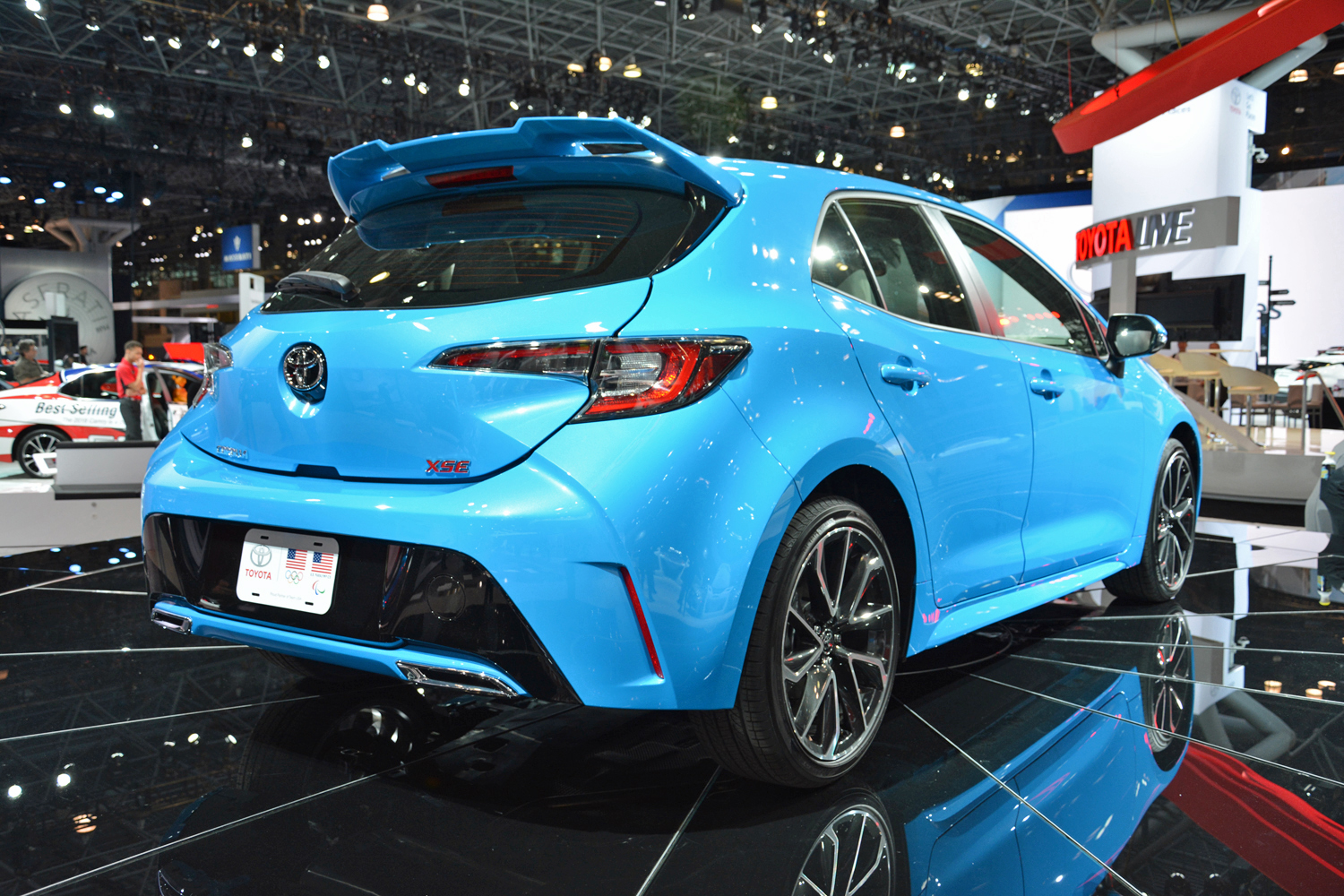The next-generation RAV4 isn’t the only new Toyota we saw at the New York Auto Show. The company also introduced the 2019 Corolla Hatch, a four-door model developed in Europe to replace the Corolla iM (formerly known as a Scion). It’s aimed at well-known compacts like the Chevrolet Cruze, the Volkswagen Golf, and the Honda Civic.
We first saw the Corolla Hatch as a Euro-spec model a few weeks ago at the Geneva auto show; it hasn’t changed much during its trip across the pond. Designers drew inspiration from bigger models like the Camry and the Avalon as they penned a front end with extra-long lights and an extra-wide grille embedded into the lower bumper. The rear end receives a similar treatment. The Corolla Hatch reflects Toyota’s ongoing efforts to make more emotional cars, especially when you compare it to the Corolla iM it replaces. The sheet metal hides the modular TNGA platform that underpins a growing number of Toyota models, including the Prius.
The big news inside is contained in the eight-inch touch screen on the dashboard. The Corolla Hatch stands proud as one of the first Toyota models offered with Apple CarPlay. Toyota finally caved after resisting to offer the software out of privacy and security concerns. It sounds like Android users are out of luck, though. The Corolla also gains Amazon Alexa integration, iPod connectivity, voice recognition, Bluetooth audio streaming, and Wi-Fi — even on the base model.
Toyota will offer only one engine at launch. It’s a 2.0-liter four-cylinder, though the firm won’t release power and torque specifications for the time being. It spins the front wheels through either a six-speed manual transmission or a fairly advanced continuously variable transmission (CVT) designed to improve fuel economy and attenuate the droning, rubber band-like acceleration often associated with this type of gearbox.
Toyota achieved this by replacing the first gear ratio with an actual gear. The Corolla shifts into its first, last, and only gear after coming to a full stop. It switches to the standard belt-drive system used by a normal CVT when you’d expect it to shift into second gear. Drivers can change gears (or virtual gears) manually by using the steering wheel-mounted shift paddles to select one of 10 pre-programmed ratios, and they can even turn on a sport mode that holds each gear for longer. The six-speed manual is comparatively super-simple. Clutch in, next gear in, clutch out.
The Corolla comes standard with tech that was reserved for large, expensive sedans just a few years ago. Every model, regardless of trim level, boasts Toyota Safety Sense (TSS) 2.0, a suite of driving aids that encompasses a a technology called pre-collision system with pedestrian detection that, according to Toyota, sees vehicles and pedestrians even at night and applies the brakes if it senses an imminent crash. TSS also includes adaptive cruise control, lane-keeping assist, automatic high beams, and a new function named lane tracing assist that keeps the car in its lane even if there are no lane markers. That’s a lot of kit for such a small car.
The 2019 Toyota Corolla Hatch will reach showrooms this summer. The lineup will include two trim levels named SE and XSE, respectively. Pricing information hasn’t been announced yet, but it’s already shaping up to be one of the segment’s most competitive models.
